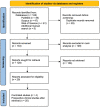Pharmacogenetic Approaches in Personalized Medicine for Postoperative Pain Management
- PMID: 38672085
- PMCID: PMC11048650
- DOI: 10.3390/biomedicines12040729
Pharmacogenetic Approaches in Personalized Medicine for Postoperative Pain Management
Abstract
Despite technical and pharmacological advancements in recent years, including optimized therapies and personalized medicine, postoperative pain management remains challenging and sometimes undertreated. This review aims to summarize and update how genotype-guided therapeutics within personalized medicine can enhance postoperative pain management. Several studies in the area have demonstrated that genotype-guided therapy has the ability to lower opioid consumption and improve postoperative pain. Gene mutations, primarily OPRM1, CYP2D6, CYP2C9, COMT and ABCB1, have been shown to exert nuanced influences on analgesic response and related pharmacological outcomes. This review underscores the integration of pharmacogenetic-guided personalized medicine into perioperative care, particularly when there is uncertainty regarding opioid prescriptions. This approach leads to superior outcomes in terms of postoperative pain relief and reduced morbidity for numerous patients.
Keywords: drug response; genetic markers; pain management; personalized medicine; pharmacogenetics; postoperative pain; therapeutic efficacy.
Conflict of interest statement
The authors declare no conflicts of interest.
Figures


Similar articles
-
Fundamental Considerations for Genetically-Guided Pain Management with Opioids Based on CYP2D6 and OPRM1 Polymorphisms.Pain Physician. 2018 Nov;21(6):E611-E621. Pain Physician. 2018. PMID: 30508992 Review.
-
Pharmacogenetics-guided analgesics in major abdominal surgery: Further benefits within an enhanced recovery protocol.Am J Surg. 2017 Mar;213(3):467-472. doi: 10.1016/j.amjsurg.2016.11.008. Epub 2016 Nov 22. Am J Surg. 2017. PMID: 27955884
-
Genetics of perioperative pain management.Curr Opin Anaesthesiol. 2018 Dec;31(6):749-755. doi: 10.1097/ACO.0000000000000660. Curr Opin Anaesthesiol. 2018. PMID: 30239351 Free PMC article. Review.
-
The role of hydromorphone and OPRM1 in postoperative pain relief with hydrocodone.Pain Physician. 2013 May-Jun;16(3):E227-35. Pain Physician. 2013. PMID: 23703421
-
Pharmacogenetics: A Precision Medicine Approach to Combatting the Opioid Epidemic.J Am Coll Clin Pharm. 2022 Feb;5(2):239-250. doi: 10.1002/jac5.1582. Epub 2021 Dec 19. J Am Coll Clin Pharm. 2022. PMID: 35784584 Free PMC article.
Cited by
-
Biochemical strategies for opioid-sparing pain management in the operating room.Biochem Biophys Rep. 2025 Jan 25;41:101927. doi: 10.1016/j.bbrep.2025.101927. eCollection 2025 Mar. Biochem Biophys Rep. 2025. PMID: 40134940 Free PMC article. Review.
-
Unveiling the link between chronic inflammation and cancer.Metabol Open. 2025 Jan 9;25:100347. doi: 10.1016/j.metop.2025.100347. eCollection 2025 Mar. Metabol Open. 2025. PMID: 39876904 Free PMC article. Review.
-
Do Single-Nucleotide Polymorphisms Affect Pain Intensity and Sufentanil Analgesia After Pediatric Scoliosis Correction Surgery?Int J Mol Sci. 2025 Apr 9;26(8):3504. doi: 10.3390/ijms26083504. Int J Mol Sci. 2025. PMID: 40331998 Free PMC article.
-
Efficacy of Erector Spinae Plane Block for Pain Management after Hip Surgery: A Narrative Review.Curr Pain Headache Rep. 2025 Apr 24;29(1):79. doi: 10.1007/s11916-025-01393-0. Curr Pain Headache Rep. 2025. PMID: 40272620 Review.
-
The Role of Biomarkers in Temporomandibular Disorders: A Systematic Review.Int J Mol Sci. 2025 Jun 21;26(13):5971. doi: 10.3390/ijms26135971. Int J Mol Sci. 2025. PMID: 40649748 Free PMC article. Review.
References
Publication types
LinkOut - more resources
Full Text Sources
Miscellaneous

